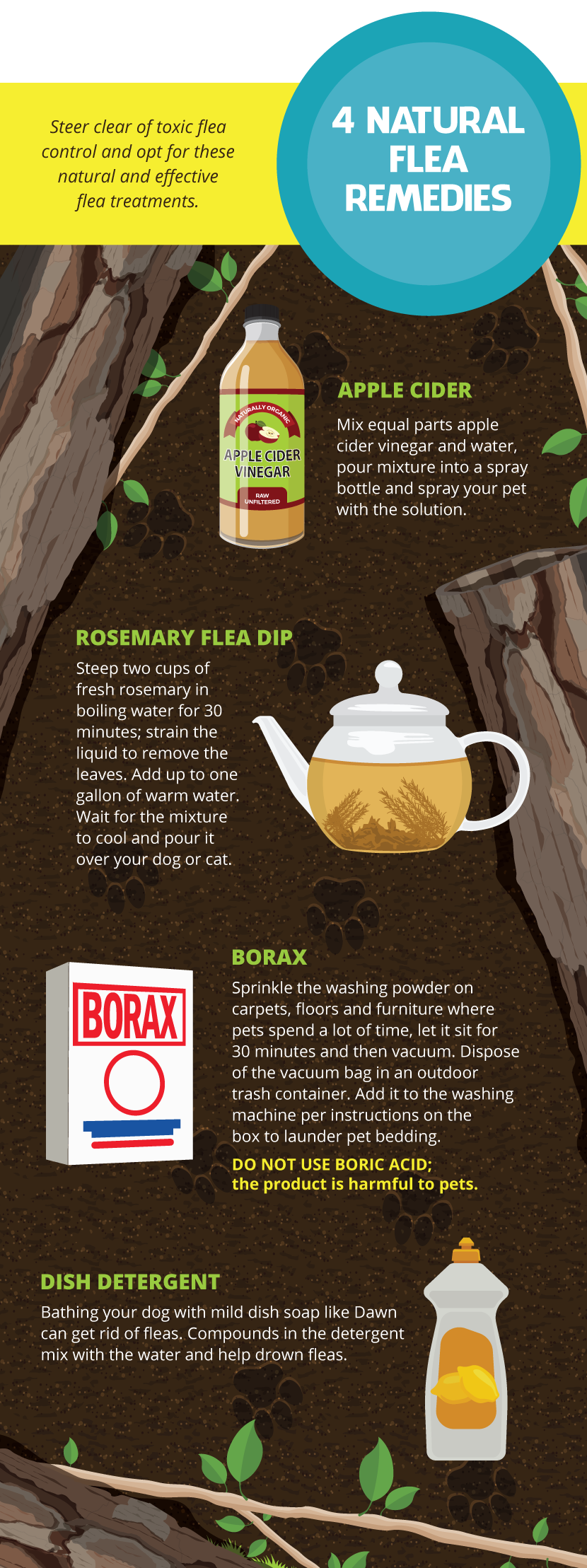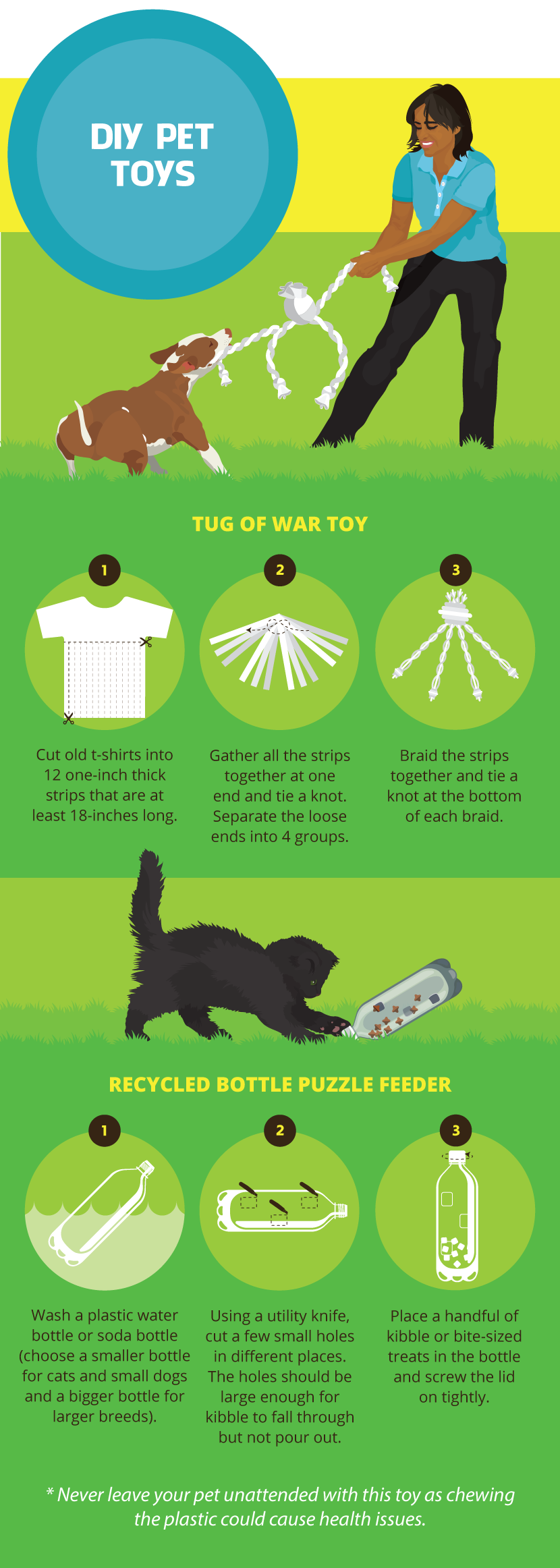Green Pets: It's Possible to Pamper Your Pet and Protect the Planet
We want the best for our pets. From kibble, collars, and leashes to pet beds, poop bags, and squeaking squirrels, we spent
more than $60 billion on our pets in 2015, according to the American Pet Products Manufacturers Association.
But spoiling our four-legged family members can take its toll on the environment.
The ingredients listed in some pet foods, flea and tick medications, and dog shampoos read like a recipe for chemical soup:
pentobarbital, tetrasodium EDTA, pyrethroids – not to mention the carbon emissions associated with imported Frisbees and the
addition of pet waste to the landfill.
The good news is, we can still spoil our pets while lowering their carbon paw prints, and this article will discuss some of
the ways we can take control of being greener pet owners.
Adopt, Don’t Shop
When it comes time to add a new furry family member, consider adoption.
Up to eight million pets end up in shelters every year, according to the Humane Society of the United States. Shelters and
rescue groups have pets of all breeds, sizes, and ages from purebred puppies and kittens to older mutts and distinguished
felines. The animals are health checked, vaccinated, and spayed or neutered and their adoption fees are a fraction of the
prices charged by pet stores and breeders. More importantly, adopting saves lives.
At least half of the adoptable pets surrendered to shelters every year never find their forever homes. Adopting a pet into
a loving home reduces stress on shelters and combats pet overpopulation. To find your next best friend, look at PetFinder.com.

Rethink Kibble
Few things get dogs and cats more excited than the sound of kibble hitting their bowls. Some conventional pet foods wreak
havoc on the environment. Ingredients like wheat and corn are grown with pesticides, for example, and some pet foods are
manufactured overseas.
Organic pet foods are one option.
GfK, a firm that tracks organic pet food sales, reports a 17 percent increase in the number of certified organic pet food
brands and products. In 2015, sales of organic pet foods topped $19.5 million.
Although pet food is not part of the USDA National Organic Program, pet food companies develop organic pet foods using
the same NOP rules applied to the foods manufactured for humans.
Organic pet foods contain no fillers, making them more nutrient dense than other commercial pet foods, which means pets
eat less. The smaller serving sizes help offset the higher price of organic pet foods.
It’s also important to choose pet foods made with sustainable ingredients.
Byproducts – animal parts that would otherwise be dumped in landfills because humans tend not to eat intestines, bone,
and organ meats – are a good option. If not used in pet foods, these parts would otherwise be sent to the landfill.
Looking for sustainable seafood is also important. Research published in the Journal of Agricultural
and Environmental Ethics found that more than 5.2 million tonnes of wild-caught forage fish is used for pet food. Some pet
food companies are using seafood certified by the Aquaculture Stewardship Council or the Marine Stewardship Council. Read
the labels.
Protect Pets and the Planet
Pets need protection from parasites.
Active ingredients in topical flea and tick treatments, including pyrethrins and pyrethroids, are associated with severe
reactions; at least 1,600 pet deaths were linked to these ingredients, according to data filed with the U.S. Environmental
Protection Agency. The same ingredients are also found in flea dips, shampoos, sprays, and powders.
There are a number of natural options on the market, including flea spritzers and shampoos made with essential oils like
mint, citronella, and geranium. Your vet can offer suggestions.
Preventive measures such as vacuuming, washing bedding, brushing pets with a flea comb, and using organic non-detergent
shampoos with neem oil are other “green” alternatives to toxic flea controls.

Opt for Earth-Conscious Products
Our pets might not know the difference between traditional and eco-friendly toys, beds, leashes, and collars, but the
environment does. Making sustainable swaps can help keep waste from the landfill, reduce greenhouse gas emissions and lower
exposure to toxic chemicals. Here are a few playtime essentials to reconsider:
Toys: Look for balls, bones, and other chewables made from non-toxic rubber and recycled materials. (Manufacturers
will include claims about the origins on the materials on the labels). You can play for hours without an impact on the
environment.
To keep waste from going to the landfill, manufacturers are looking for ways to use recycled materials. Shops stock
squeak toys made from recycled plastic bottles and tug-of-war toys made from upcycled fabrics. Hemp toys are another
eco-friendly option. Toys made with the natural material are often free of toxic dyes and tough enough to withstand the jaws
of the strongest dogs.
Beds: Read the labels carefully and look for pet beds stuffed with post-consumer recycled materials and covers fashioned
out of organic cotton, hemp, or recycled fabrics.
Collars and leashes: Most dog leashes are made of nylon. Nitrous oxide, a greenhouse gas associated with global
warming, is emitted during the production of nylon. Opt for leashes and collars made with canvas, hemp, or other recycled
materials instead.
To further reduce the carbon paw print of all playtime and naptime essentials, look for products that were manufactured
in the USA instead of shipped from overseas.

Keep a Lid on Pet Waste
Pet owners know that poop happens. Rather than scooping dog waste with plastic bags or flushing cat litter down the
toilet, it’s important to think about the environmental impact of pet waste.
Feces are biodegradable but most of the scoop bags made for picking it up are made of plastic. There are better options,
including brands that produce bags from biodegradable, compostable materials.
Cat litter can also be hard on the planet. Conventional products are made with sodium bentonite, a clumping clay that can
cause asthma and lung problems in cats when it’s inhaled, or silica, an absorbent compound linked to respiratory issues like
bronchitis. Both sodium bentonite and silica are produced from strip mining and do not decompose.
There are eco-friendly options, including cat litters made from wheat, recycled newspaper, corn, and pine sawdust. All
are fragrance-and chemical-free, biodegradable, and, most importantly, absorbent. Even “green” cat litters should not be
flushed down the toilet. Cat feces can contain a parasite called Toxoplasma gondii that can contaminate streams and
rivers, harming wildlife.
Look for cat litter boxes made from recycled materials
Making conscious decisions about acquiring a pet, choosing food, treats, toys, and pet care products will not only help
our dogs and cats live long, healthy lives, it ensures that our four-legged family members are living lightly on the
planet.
Embed the article on your site

